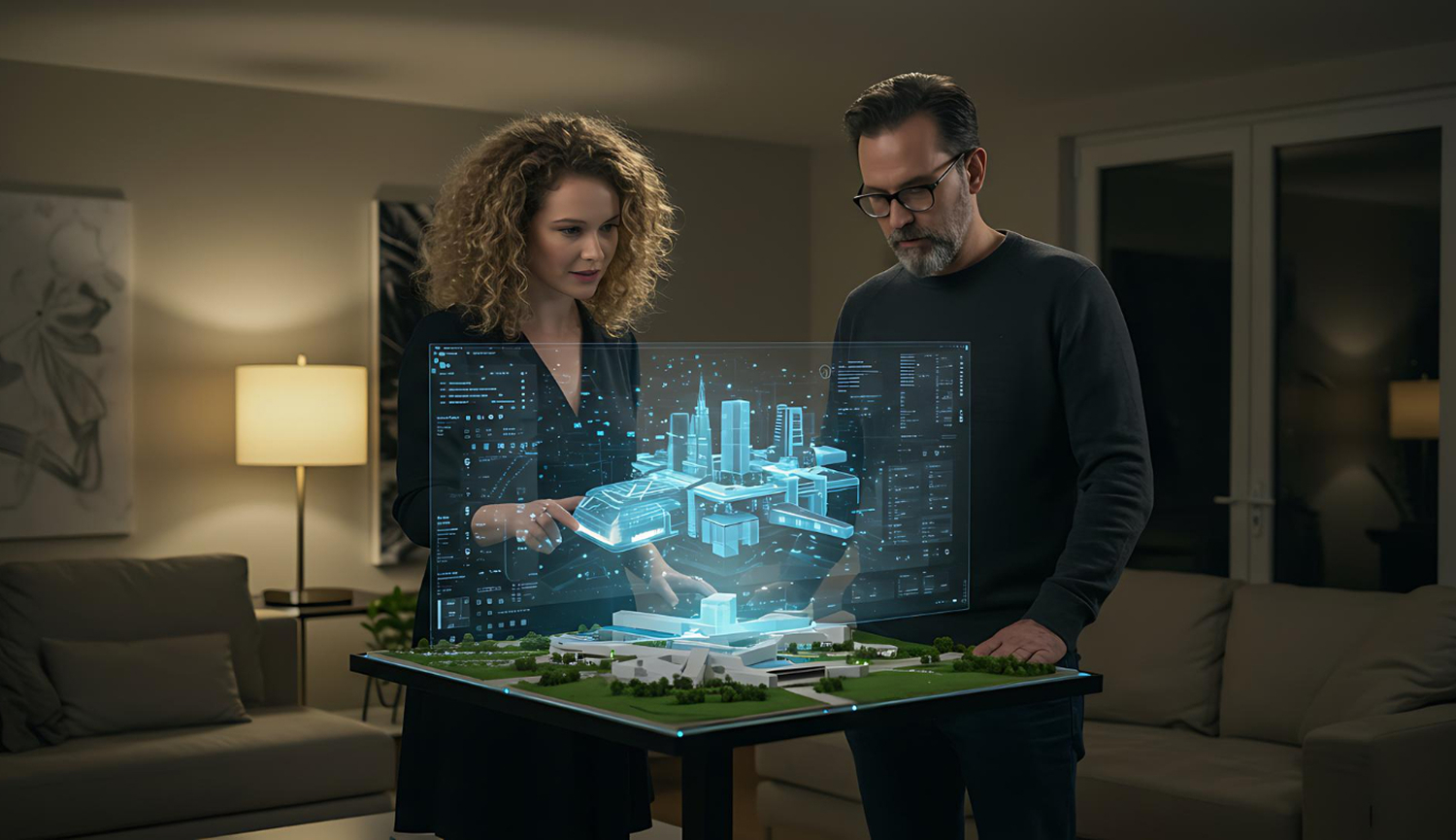
Introduction
The convergence of Internet of Things (IoT) sensors and Artificial Intelligence (AI) is revolutionizing building management, creating intelligent environments that optimize energy use while enhancing occupant comfort. This article explores how smart building technologies are transforming commercial real estate, reducing operational costs by up to 30% while improving tenant satisfaction scores by 40%.
Core Components of Smart Building Systems
1. IoT Sensor Networks
- Environmental sensors (temperature, humidity, CO2, VOC)
- Occupancy detection (PIR, video analytics, WiFi tracking)
- Equipment performance monitors (HVAC, elevators, lighting)
- Utility meters (electricity, water, gas with submetering)
2. Data Infrastructure
- Edge computing devices for local processing
- Building Management System (BMS) integration
- Cloud-based data lakes for historical analysis
- Digital twin simulations for scenario testing
3. AI Analytics Layer
- Predictive maintenance algorithms
- Adaptive climate control systems
- Anomaly detection for equipment faults
- Space utilization optimization
Case Study: The Edge, Amsterdam
Project Overview
This 40,000 m² office building achieved a 98.4% BREEAM sustainability score using 28,000 IoT sensors connected to a central AI platform.
Key Innovations
- Personalized workspace allocation via app based on daily schedules
- Dynamic lighting that adjusts to daylight levels and occupant preferences
- Predictive HVAC that learns occupancy patterns and weather forecasts
- Parking guidance system that reduces vehicle search time by 75%
Results
- 70% reduction in electricity consumption compared to similar buildings
- 60% decrease in water usage through smart monitoring
- Tenant satisfaction score of 4.8/5.0 (industry average: 3.2)
- 0% vacancy rate since opening despite premium pricing
Energy Optimization Techniques
1. HVAC Intelligence
Machine learning models analyze:
- Historical weather patterns
- Building thermal mass characteristics
- Real-time occupancy data
- Equipment performance curves
Example: A Chicago office tower reduced HVAC costs by 29% using predictive pre-cooling algorithms.
2. Lighting Automation
Advanced systems incorporate:
- Circadian rhythm lighting schedules
- Task tuning for different work areas
- Daylight harvesting with dimmable LEDs
- Vacancy-based shutoff (vs traditional occupancy sensors)
3. Demand Response Integration
AI systems participate in utility programs by:
- Predicting energy price spikes
- Optimizing battery storage dispatch
- Scheduling non-critical loads
- Generating automated demand response bids
Tenant Experience Enhancements
| Feature | Technology | Impact |
|---|---|---|
| Personalized Comfort | Mobile app control with AI suggestions | 28% increase in productivity |
| Wayfinding | AR navigation via tenant apps | 80% reduction in late arrivals |
| Meeting Room Optimization | Usage pattern analysis | 40% better space utilization |
| Wellness Monitoring | Air quality dashboards | 31% fewer sick days |
Implementation Roadmap
- Assessment Phase (4-8 weeks)
- Current system audit
- Energy baseline establishment
- Stakeholder interviews
- Pilot Deployment (3-6 months)
- Select representative floors/zones
- Install core sensor network
- Validate data quality
- Full Rollout (6-18 months)
- Phased equipment upgrades
- Staff training programs
- Tenant onboarding
- Continuous Optimization
- Monthly performance reviews
- Algorithm refinement
- Technology refresh planning
Financial Considerations
Cost Components
- Hardware: $0.50-$2.00 per square foot
- Software: $10,000-$100,000 annual license
- Integration: 20-40% of total project cost
- Change Management: 10-15% budget allocation
ROI Calculation
Typical payback periods:
- Lighting controls: 1.5-3 years
- HVAC optimization: 2-4 years
- Full building automation: 3-7 years
Note: Many jurisdictions offer 30-50% rebates through utility efficiency programs.
Future Trends
- 5G-enabled Building Networks: Ultra-low latency for safety systems
- Self-healing Buildings: Automated fault detection and resolution
- Occupant Biometrics: Non-intrusive wellness monitoring
- Blockchain for Utilities: Automated P2P energy trading
- Generative AI for Design: Optimizing new construction layouts
Conclusion
Smart building management systems powered by IoT and AI represent the future of sustainable, human-centric workspaces. As demonstrated by leading implementations, the technology simultaneously delivers dramatic energy savings while creating environments that tenants actively prefer. Building owners who embrace this transformation now will gain significant competitive advantages in leasing rates, occupancy levels, and asset valuations.




